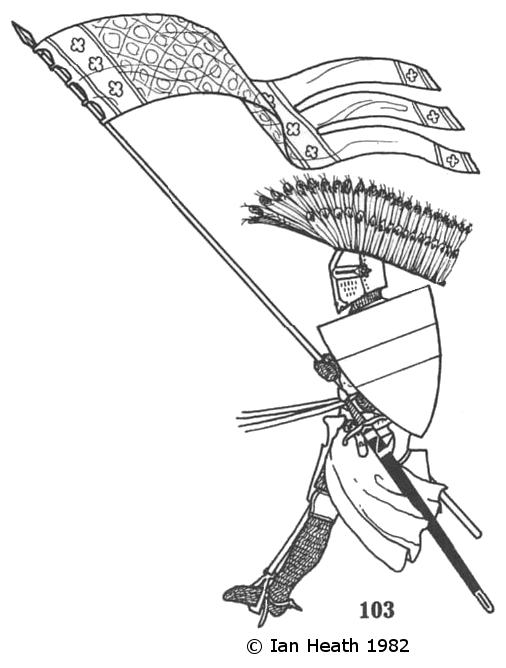Try Amazon Fresh Create an Amazon Wedding Registry |
 |
BOHEMIAN KNIGHT, 13th CENTURY
An extract from Armies of Feudal Europe 1066-1300by Ian Heath
Try Amazon Fresh Create an Amazon Wedding Registry |
 |
103. BOHEMIAN KNIGHT, 13th CENTURY
Bohemia (including Moravia from 1002) was a member-state of the Holy Roman Empire throughout this era, first becoming a kingdom in 1086. Large numbers of Germans settled there from the 10th century onwards, which inevitably resulted in the general adoption of Western European feudalism, armour and styles of dress at an early date. This particular figure is King Premysl Ottokar II (1253-78), taken from his seal. His reign saw Bohemia reach the pinnacle of its power, Ottokar being king of Austria too (1251-78), in addition to which he seized Carinthia and Carniola (1260) and Styria (1261). The Bohemian royal army inevitably included many German knights, which resulted in the battlefield desertion on several occasions of Ottokar's Bohemian nobles, who resented the favours shown to the Germans.
Note his helmet crest, comprising two wings made up from eagle feathers; crests such as this were extremely popular amongst the Western Slavs, especially the Poles (see figure 114). The only other item of special interest is his long sword, the 'great sword' or 'sword of war' as it was called in the late-13th century. Similar long swords had been in use since the 11th century, William of Apulia describing the Swabian swords at Civitate (1053) as 'particularly long and very sharp', and they were always particularly popular in Germany. Primatus account of the Battle or Benevento (1266) mentions the long swords of the Germans, comparing them to the shorter French weapons, and Guiart too writes of the 'big swords of Germany', said to have been favoured in addition by the English and Normans. After c.1250 the hilts of such swords were often made long enough to be gripped with both hands if necessary, the usual length of such weapons being 37-40", with a grip of another 6½-9". From the end of the 13th century an even longer type was also in use, measuring 45-55". It seems probable that such long swords were often slung at the saddle-bow rather than girded at the waist. This practice is recorded as early as the 11th century and there are many references to a second sword slung at the saddle throughout his period, though unfortunately no illustrations seem to have survived.